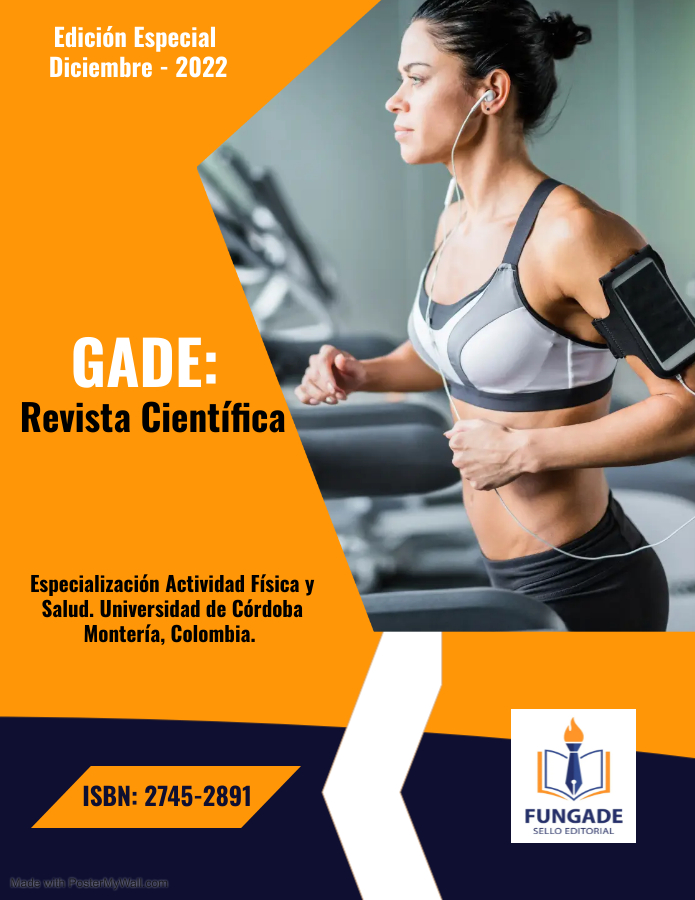Physical activity in the officials of the Cordoba Sena Regional
Abstract
The objective of this work is to promote and encourage the officials of the National Learning Education Service (SENA), to be physically active people through physical activity, to avoid and reduce the risk of contracting non-communicable diseases such as are: sugar, obesity, hypertension, among others, due to the high degree of sedentary lifestyle in them. Physical inactivity is one of the main risk factors for mortality. People with an insufficient level of physical activity have a 20% to 30% higher risk of death compared to people who achieve a sufficient level of physical activity. The physical inactivity that today is very common in this population (civil servants), occurs due to the long working hours that they carry out and that demand several hours choosing a single position without taking the proper active breaks since through these movements they can improve an adequate posture that allows you to better develop your functions, physiological, sociological, psychological and pedagogical principles must be creatively integrated, which allow physical activity to be applied in daily life in each one of them and in this way promote good habits and healthy lifestyles, avoid a sedentary lifestyle, avoid diseases that are reflected by the lack of physical activity. It seeks to design a physical activity program for the officials of the Córdoba SENA Region in order to minimize illnesses caused by physical inactivity and promote good practices that help them stay physically active and avoid injuries, among others.
Downloads
References
Bláfoss, R., Skovlund, S. V., López-Bueno, R., Calatayud, J., Sundstrup, E., & Andersen, L. L. (2020). Is hard physical work in the early working life associated with back pain later in life? A cross-sectional study among 5700 older workers. BMJ Open, 10(12) doi:10.1136/bmjopen-2020-040158
Brand, S. L., Coon, J. T., Fleming, L. E., Carroll, L., Bethel, A., & Wyatt, K. (2017). Whole-system approaches to improving the health and wellbeing of healthcare workers: A systematic review. PLoS ONE, 12(12) doi: 10.1371/journal.pone.0188418
Craig, C. L., et al. (2003). "International physical activity questionnaire: 12-country reliability and validity." Med Sci Sports Exerc 35: 1381-95).
Grupo de Modos, Condiciones y Estilos de Vida Saludables, Sub-Dirección de Enfermedades no Trasmisibles. (2015). ABCE Pausas Activas. Bogotá D.C: Minsalud.
Hansen, E. C. (1982). Maintenance of the physical capacity of the elderly. Danish Medical Bulletin, 29(3), 113-115. Retrieved from www.scopus.com
Min Salud https://www.minsalud.gov.co/sites/rid/Lists/BibliotecaDigital/RIDE/VS/PP/ENT/abece-actividad-fisica-entorno-laboral.pdf Consultado: 27/11/2022 09:32 pm.
Pardini R, Matsudo S.. Validation of the International Physical Activity Questionaire (IPAQ version 6): pilot study in Brazilian young adults.. Rev Bras Cien E, 9 (2001), pp. 45-51
Quaal, S. J. (1981). A study of fitness and cardiovascular risk factors in male office workers. Communicating Nursing Research, 14, 9-24. Retrieved from www.scopus.com
Terman, L. M. (1913). The sleep of school children, its distribution according to age, and its relation to physical and mental efficiency. Journal of Educational Psychology, 4(4), 199-208. doi:10.1037/h0072166
Warren, H. C. (1914). The mental and the physical. Psychological Review, 21(2), 79-100. doi:10.1037/h0070320.
Copyright (c) 2022 GADE: Scientific Journal

This work is licensed under a Creative Commons Attribution-NonCommercial-NoDerivatives 4.0 International License.






